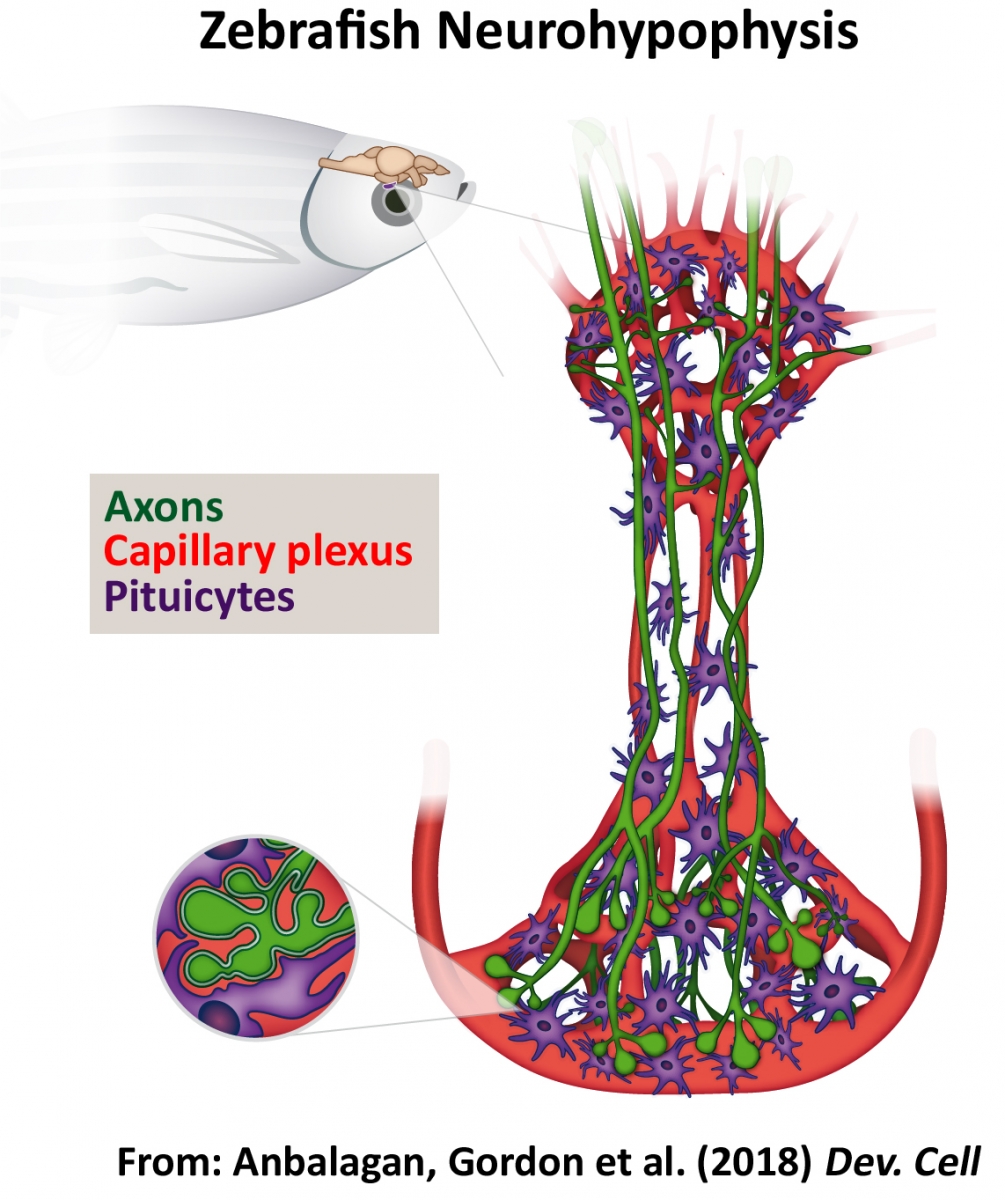Neurohypophyseal morphogenesis
 A primary research direction of our lab is studying the assembly and maintenance of the hypothalamo-neurohypophyseal system (NHS). This important neuroendocrine conduit between brain and blood is formed by multiple neurovascular interfaces. These interfaces comprise hypothalamic axonal termini, which store and secrete the neurohormones oxytocin and vasopressin, astroglial-like cells termed pituicytes and permeable (i.e. fenestrated) blood vessels, through which the neurohormones are released into the general circulation without disrupting the blood-brain barrier.
A primary research direction of our lab is studying the assembly and maintenance of the hypothalamo-neurohypophyseal system (NHS). This important neuroendocrine conduit between brain and blood is formed by multiple neurovascular interfaces. These interfaces comprise hypothalamic axonal termini, which store and secrete the neurohormones oxytocin and vasopressin, astroglial-like cells termed pituicytes and permeable (i.e. fenestrated) blood vessels, through which the neurohormones are released into the general circulation without disrupting the blood-brain barrier.
Selected Publications
- Chen, Q., Leshkowitz, D., Li, H., van Impel, A., Schulte-Merker, S., Amit, I., Rizzoti, K. and G. Levkowitz. (2023). Neural plate progenitors give rise to both anterior and posterior pituitary cells. Developmental Cell, https://doi.org/10.1016/j.devcel.2023.08.018. pubmed
- Gordon L., Blechman J., Shimoni E., Gur D., Anand-Apte B. and G. Levkowitz. (2019). Fenestrae-associated protein Plvap regulates the rate of blood-borne proteins passage into the hypophysis. Development doi: 10.1242/dev.177790. pubmed
- Anbalagan S, Gordon L, Blechman J, Matsuoka R, Rajamannar P, Wircer E, Biran J, Reuveny E, Leshkowitz D, Stainier D.Y.R, Levkowitz G. (2018). Pituicyte cues regulate the development of permeable neuro-vascular interfaces. Developmental Cell 47, 711–726. pubmed
- Gutnick, A., J. Blechman, J. Kaslin, L. Herwig, H-G. Belting, M. Affolter, J.L. Bonkowsky and G. Levkowitz. (2011). The hypothalamic neuropeptide oxytocin is required for formation of the neuro-vascular interface of the pituitary. Developmental Cell 21:642–654. pubmed
